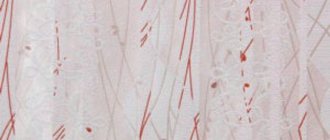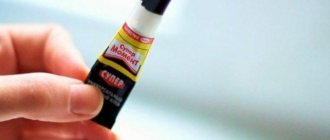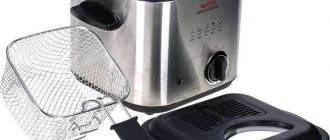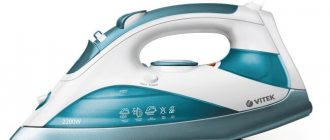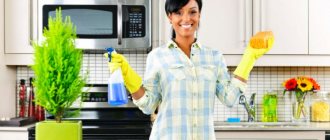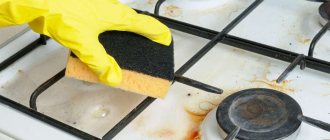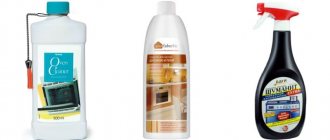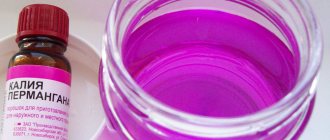Does your wallpaper look a little tired? Over time, dust and moisture can discolor them, leaving wallpapered walls dirtier than the day they were wallpapered.
Someone accidentally smeared a wall in a loved one’s hallway, a little artist decorated the wall upholstery with his “art,” and a greasy stain in the bedroom remained unexplained. But there is no need to give up panic.
We'll show you how to properly clean any dirt from your wall trims.
How to clean wallpaper? Let's first look at the type of wall covering: cleaning paper and tapestry wallpaper will be fundamentally different from cleaning vinyl wallpaper. Rolls of wallpaper are usually marked depending on how much the material can come into contact with water.
Rinse with water
If the pattern of the wall covering does not wear off and remains the same, the wallpaper can be washed. This is the fastest way to clean wallpaper stains, but it has one drawback - it cannot be used on paper wallpaper.
Wallpaper can be washed with water as follows: first select a small wall area that is hidden from view (for example, behind a sofa) and wet it with soapy water and a sponge.
However, before washing, wash the surface of vinyl wallpaper with a dry cloth and wipe with a sponge and soap. After washing, wipe the surface with a damp absorbent cloth to remove excess water.
How to wash, procedure
The most common and effective way to wash wallpaper in a room is with soapy water or cleaning products.
- To do this, it is worth conducting an experiment on a small area in order to understand how the wallpaper will react.
- A cleaning agent or soap is rubbed into a container with warm water, a clean rag is dipped into the solution, wrung out and a small area is wiped with gentle movements.
- Afterwards, wipe the surface with a clean, dry cloth.
Once the area is dry, the result will become visible. If you need to repeat the procedure, you should first wait until it dries completely, and then wash the area again.
Eraser or melamine sponge
The easiest way to remove any kind of wallpaper is to remove the simplest office eraser. This can cut off stains left by your fingers. Meanwhile, melamine sponges (the most important modern stain-prevention solution) will help clean even ink stains.
However, remember that these sponges are quite abrasive and can damage the wallpaper pattern, so try on a small area of wallpaper first.
Pink spots
If for some reason pink spots appear on the wallpaper, there can be many reasons:
- The appearance of mold - in this case, the stains may increase and begin to darken over time.
- The walls are covered with vinyl wallpaper - this is usually due to the fact that such wallpaper takes a long time to dry, and for this reason the light may be distorted. Over time, the spots will go away on their own.
- The technology for working with the primer was violated.
- The technology for processing the walls was violated, perhaps the reason was a poorly dried layer of plaster or putty. In this case, you will have to remove the wallpaper and wait until everything dries.
Yes, removing grease stains from wallpaper doesn’t seem like such a difficult task!
White vinegar or bleach
For vinyl stains caused by water damage, whether mold or tannins, try a bleach or white vinegar solution. Start with a weaker solution and add more bleach or vinegar as needed. Mix ¼ cup of bleach with 1 cup of water. First, test the solution on a small, inconspicuous spot on the wall behind the door.
If the method appears to work after five to ten minutes, continue. Dip a soft sponge into the mixture and remove excess water. Apply the sponge to the stain and leave for five minutes. Remove any remaining bleach with a clean, damp sponge.
For dirt or grease stains on fiberglass wallpaper: Use ½ cup white vinegar mixed with 1 cup water. Apply this solution to the painted part of the wall and place it in the same direction as the wallpaper pattern. Wipe the surface with a sponge soaked in clean water. Next is a dry towel.
Causes and ways to eliminate dark spots
This problem is rightfully considered the most serious, because their appearance may indirectly indicate that fungus has appeared under the wallpaper and mold will soon have to be dealt with. As soon as after pasting you notice that black spots have appeared, you should urgently take measures to eliminate them.
Causes of dark marks
Before moving on to active steps to eliminate and decorate dark and sometimes even black marks, you need to understand the reason for their appearance in certain areas of the room. Interestingly, fungus and mold most often appear under the panels, and not on them. There are three reasons for their occurrence:
- Dark spots on the wallpaper can be caused by improperly carried out repairs without treating the walls with an antiseptic.
- Incorrect indoor microclimate: lack of airflow and ventilation and high humidity.
- Wallpapering the wall with rough finishing.
Ways to solve the problem of black spots
In any of the above cases, you should ruthlessly remove the old material from the walls. Without preliminary cleaning, not a single antifungal agent will help you. And even if it helps, it will only be for a short period of time, after which the fungus will again spread between the canvas and the wall. To solve this problem, you must first create a favorable microclimate in the room. Approximate action plan:
- Remove all furniture and textiles from the room.
- Treat all vertical surfaces with a cloth soaked in hydrogen peroxide.
- Remove all remaining coating from the walls.
- To prepare surfaces, sand them thoroughly with sandpaper.
- After this, completely wipe off the dust, or even better, thoroughly wash the prepared surface.
- Apply a professional mold and mildew remover to the entire area.
- After drying, wipe everything with a damp cloth to remove any remaining product and dust.
- And only after applying primer with antifungal and antibacterial properties can you safely begin gluing.
Important! Remember that during all preparatory work, you need to systematically ventilate the room. In addition, it is extremely important for your own safety to carry out work in a special mask that protects the respiratory system.
The difference between wallpaper and dirt on it
Wallpaper in kitchens and bathrooms can become coated with sprinklers, smoke and vaporized oils, creating a sticky surface where dust can easily stick and obscure the wall.
Meanwhile, wallpaper in the bathroom, where it is exposed to high humidity and splashing water, can become moldy where it comes into contact with dampness. If it is very saturated, such as due to a leak or burst pipe, water may also seep through the walls and release tannins from the underlying wood, staining your wallpaper.
If you have cellulose, fabric, bamboo, hybrid or removable wallpaper , you can clean it by only lightly dusting or vacuuming the walls. Many natural fibers and fabrics can be damaged by water and cleaning chemicals, so check with the manufacturer before staining.
The exception is vinyl and fiberglass wallpaper - the most durable of all. Either can be cleaned using all-purpose cleaning sprays or the gentle cleaning method described above.
However, be careful to work with non-abrasive chemicals (no powders) and only soft scouring pads or sponges (no scouring pads) to ensure you don't scratch, tear or damage the surface. Do not use scrubs that contain very fine abrasives.
Source
Types of washable
All wallpapers can be cleaned, only some can be washed with water without fear of consequences, while others must be treated very carefully. Let's consider the types of coatings that are washable.
Vinyl
The wallpaper has an unusual texture, when a layer of PVC is applied to a paper base, which is absolutely harmless to human health. There are simple and foamed ones. Such canvases can be washed, even with soapy water, if it is compact vinyl. They use soft cloth and special sponges.
Textile, cork
This type of wallpaper is not recommended for use in the kitchen, since if the texture is porous, they absorb unpleasant odors and moisture. They are not suitable for wet cleaning, dry cleaning only.
Many people love cork and fabric flooring. They have the ability to retain heat and release it in cool weather and, conversely, absorb it in hot weather. Their composition is completely natural.
If you still want to purchase cork or fabric sheets, it is better to buy wax-coated ones, which also play a sound-proofing role and are also easy to wet clean.
Non-woven
Non-woven fabric consists of cellulose (paper) and fabric fibers. The base is paper. This wallpaper is very durable and dense and requires dry cleaning with a sponge or vacuum cleaner. Often such coatings are glued for painting. If the walls are dusty, then you just have to repaint them, and the problem will solve itself. It is possible to paint 5 or more times.
See also
Effective means and traps for getting rid of midges in the house and apartment
To make it easy to handle non-woven fabrics, waterproof paint is used, which will make them easier to care for in the future.
Paper
Paper wallpaper, the most popular, is in great demand. A variety of colors, ease of gluing, low cost are the main indicators due to which they are in demand. However, they are particularly demanding in care; they should not be treated with a wet cloth, but only vacuumed with a soft brush or swept with a feather duster.
Photo wallpaper
Photo wallpaper is a large picture glued to the wall, consisting of separate segments. Paintings can be of any texture: paper, vinyl, acrylic, non-woven, silk-screen printing. Everything except paper can be washed using special detergents. Care for paper photo wallpaper should be carried out as for vertical paper wallpaper.
Liquid
Modern decorative “clothes” for walls. It contains natural ingredients: cellulose, silk fibers, cotton. Consistency is achieved by thinning with water-based paint. They are applied to the walls with a special roller. Such coatings look original, they are supposed to be painted later, and they do not have seams. Cleaning from dirt and dust is carried out dry: with a broom or vacuum cleaner.
What wallpaper can be washed
Basic information about the cleaning method is contained on the wallpaper packaging. The wave-shaped icon indicates resistance to moisture. The degree of resistance is expressed in the number of waves:
- One is moisture-resistant, but not washable wallpaper. The material is wiped with a damp cloth.
- Two - the material can be washed with soap and water.
- Three is a super-washable wallpaper that can withstand repeated exposure to most detergents.
- The wave and ridge are a material that can withstand water and brush friction.
